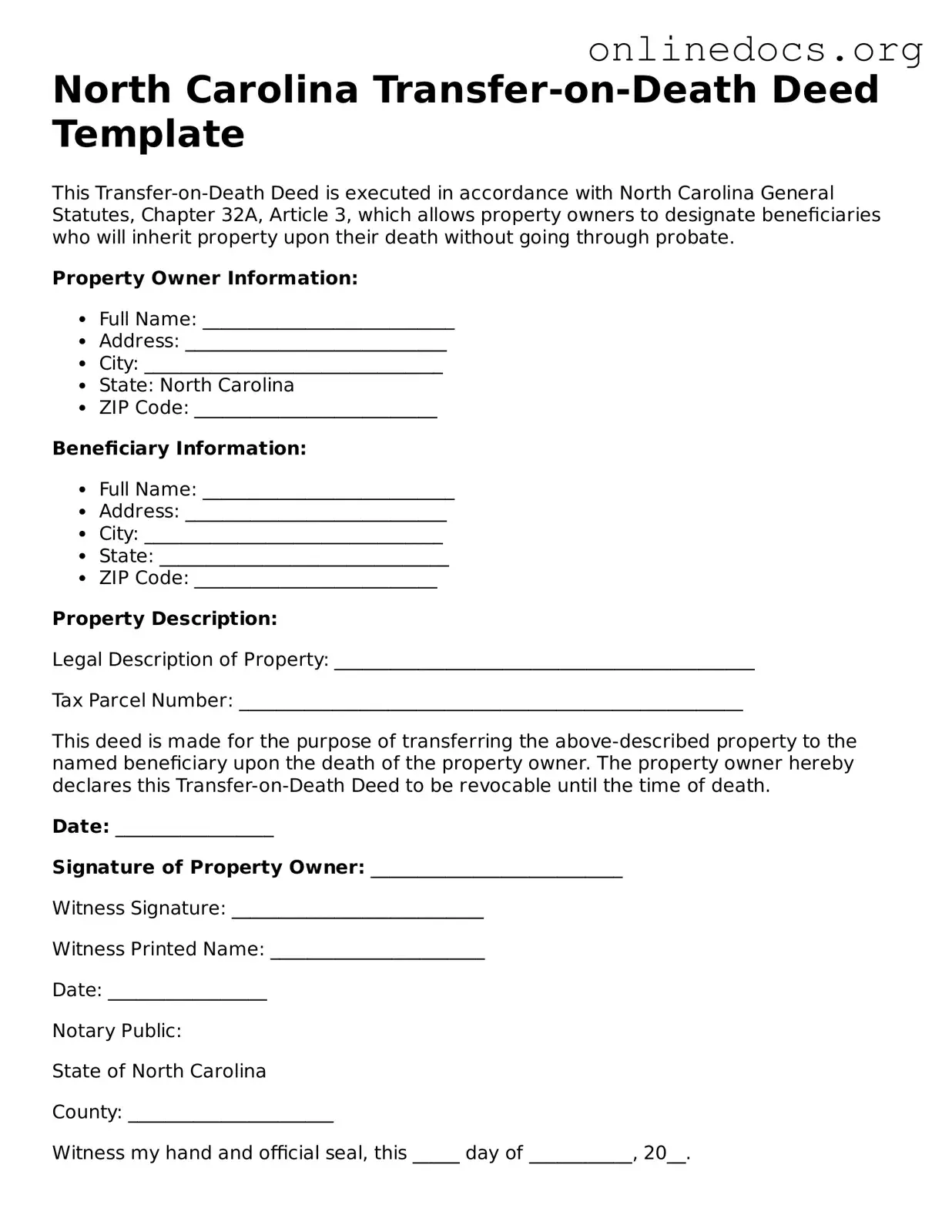The North Carolina Transfer-on-Death (TOD) Deed allows property owners to transfer real estate to beneficiaries upon their death without going through probate. This document is similar to a Living Trust, which also allows for the seamless transfer of assets. A Living Trust holds assets during the owner’s lifetime and specifies how they should be distributed after death. Both documents provide a way to bypass the often lengthy and costly probate process, ensuring that beneficiaries receive their inheritance quickly and efficiently.
Another document akin to the TOD Deed is the Lady Bird Deed, or Enhanced Life Estate Deed. This type of deed allows the property owner to retain control over the property during their lifetime while designating beneficiaries to receive the property upon death. Like the TOD Deed, it avoids probate. However, the Lady Bird Deed offers additional flexibility, allowing the owner to sell or mortgage the property without needing consent from the beneficiaries.
The Warranty Deed is also similar, as it transfers ownership of real estate. However, unlike the TOD Deed, a Warranty Deed transfers ownership immediately. This means that the new owner has full rights to the property as soon as the deed is executed. In contrast, the TOD Deed ensures that ownership only transfers upon the owner’s death, allowing for more control during their lifetime.
A Quitclaim Deed shares some similarities with the TOD Deed, particularly in its ability to transfer property. A Quitclaim Deed transfers whatever interest the grantor has in the property without guaranteeing that the title is clear. While a Quitclaim Deed can be used during the owner’s lifetime, the TOD Deed is specifically designed for posthumous transfers, providing a clearer path for beneficiaries.
When engaging in real estate transactions, it is crucial to have the correct forms in place to avoid any potential issues. For example, individuals can visit fillpdf-forms.com to access important documents like the Vehicle Purchase Agreement, which ensures clarity and protection for both parties involved in the sale.
The Beneficiary Deed is another document that closely resembles the TOD Deed. It allows property owners to designate beneficiaries who will receive the property upon their death. Like the TOD Deed, it avoids probate. The key difference lies in the terminology and specific legal framework, as the Beneficiary Deed is not recognized in all states, whereas the TOD Deed is a part of North Carolina law.
Lastly, the Power of Attorney can be seen as related, though it serves a different purpose. A Power of Attorney allows someone to manage another person’s financial affairs while they are alive, which can include real estate transactions. While it does not directly facilitate the transfer of property upon death, it can be used in conjunction with a TOD Deed to ensure that the property owner’s wishes are executed properly before their passing.
